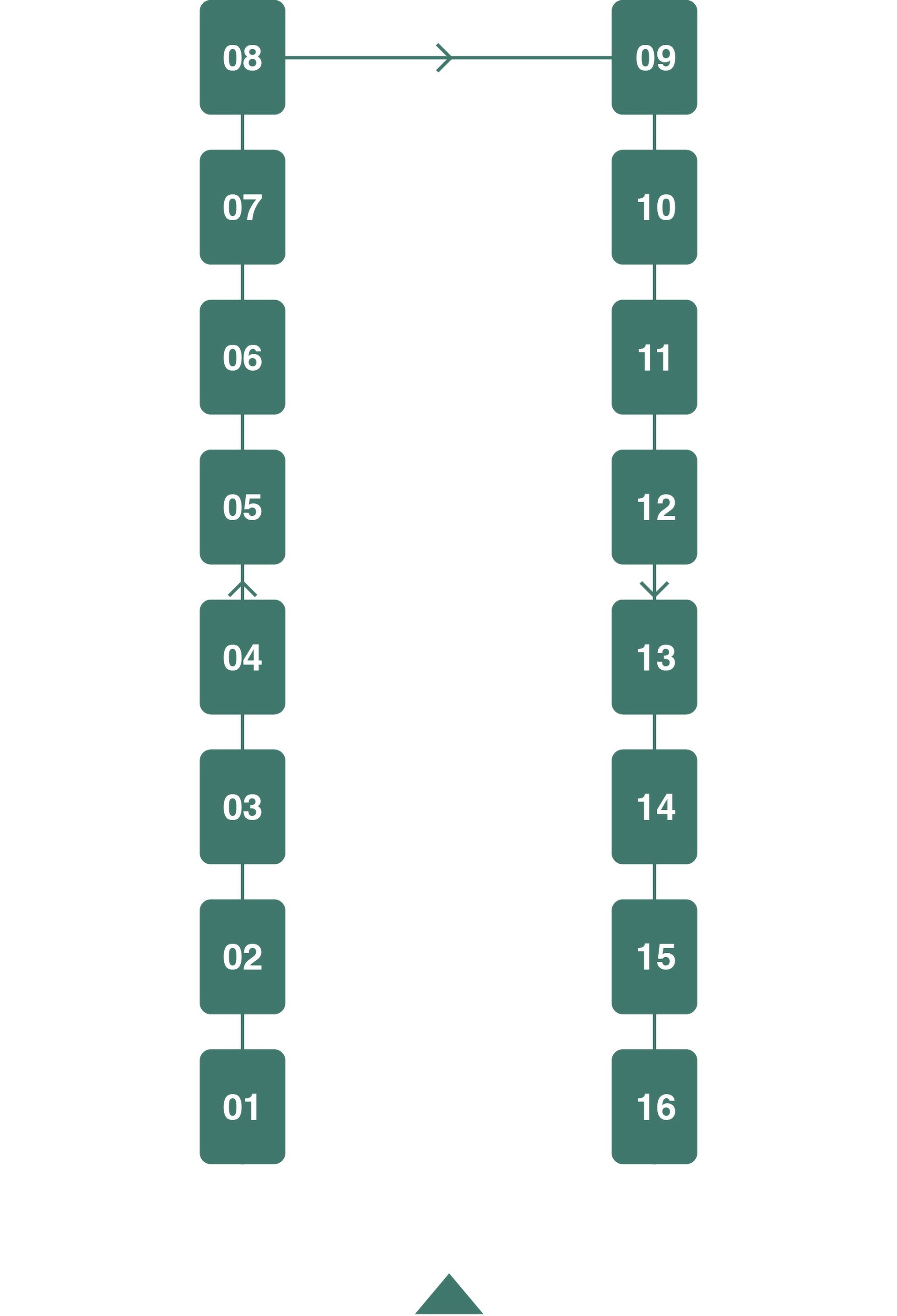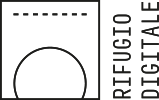
Lonely Living. The architecture of primary space
Back in 2002 at the 8th Venice Architecture Biennale 18 Italian architects were asked to produce a collective project, a high density village. Once a client was appointed each architect designed a space of approximately 16 sqm starting from two existential issues on the spirit of the metropolitan life: on the one hand the theme of the emergency and temporaneity, and on the other the theme of psychological isolation and solitude. This programme with a dual identity provoked as many responses on the part of the architects. Some are simple, practical and tangible, others are complex and articulated.They were not asked for small monuments, works of art or metaphor but rather primary spaces where the three vital functions of living could take place: sleeping, eating and evacuation to which the architects added an intellectual function, contemplation. As in the reality of any project that is imagined, drawn and then constructed, the architects also had to resolve technical issues linked to the material, democratically the same for everyone: industrial-looking chipboard panels, dull brown colour, no tactile properties. These single-materiality was to be taken as both point of departure and arrival, as it could represent both an advantage and a restriction; poor and basic the material forced each architect to implement a careful reasoning process based on static, decoration, assembly, durability… And so everyone went to create a piece of the jigsaw, composing a kind of labyrinth, a kasbah, a village set on a steel podium to emphasise its density and access. Wanting to group them, the projects could be subdivided by type: the mound-type – with hundreds of micro-holes to create a magical and trascendant atmosphere inside -, the cupboard-type – a trunck containing the objects needed for our subsistence -, the terrace-type – a staircase leads poetically up to where the sky becomes a view over the universe -, the public space-type – interiors and exteriors merge one in the other creating porticoes, wider areas, shelves, apertures and thresholds -, lastly the monument-type a challenge to the social mission of architecture. Twenty years later, it seemed a good idea to re-examine how the existential issues of metropolitan life and the problems of psychological isolation and solitude are as real now as they were then, and how much evolution has taken place over the course of these last two decades on the subject of minimal housing which, especially in the post-pandemic period, has brought it once again front and center. As was done in 2002, we wanted to bring together those same designers, this time at Rifugio Digitale, to present their original projects, now in digital format. The material is projected on the 16 monitors that occupy the space, in the form of videos: a story, narrated through drawings, sketches and splendid photographs by Luca Campigotto and Pietro Savorelli.
Based on a masterplan drawn up by Ipostudio architects, each architect has received a flat lot on which to stand a structural base of about 5×5 meters. On this base, a prototype-building-room will be erected, with the maximum dimensions – per floorplan – of 16 square meters, and a maximum height of 4 meters. These measurement shall be understood as the maximum dimensions possible. The buildings are out of doors, and are not equipped with electrical energy or other systems. Each building is constructed in all parts with a single material: chipboard panels produced and supplied by the Frati Group. The builders may not use any other materials. The buildings will have to be constructed without doors, windows, glass, metallic structures, tiling or other. Colors can have an important role but must in any case be coordinated by the general directives, i.e. those of the masterplan. The architect may not use the space to advertise or exhibit their work in any way. The building-room is their exhibit, which is complete also with the minimum furnishing necessary to make the place habitable (by way of demonstration). The theme that each building has in common with all the others is the social dimension of the building, the emergency connected to immigration from outside the EU, from the unhoused condition of many individuals, the elderly, children and all those who live in a state of environmental and spatial hardship and who need to live at least temporarily in a condition of human dignity. Moreover, the theme could also extend to buildings for contemplation, like the artist’s pavilion, or a place of study and reflection for a writer. This could be a contemplative place in which ideas can be born. Housing for an immigrant from outside the EU, an apartment or room for an elderly or handicapped person, a play-house for a child, a changing hut for a swimmer, a refuge hut for a mountain-climber, an emergency shelter for an earthquake victim, a vacation cottage, a structure or room for meditation. The architects are asked to design structures that are easy to build, clear and concise in their goals, in which they identify the social significance of their proposals. They are not asked, by any means, to design little monuments to their own genius, or miniature temples, but original responses to concrete needs, to be identified in specific, real commitments, which each architectural studio will be required to indicate. We therefore ask each architect not to design a home for a generic artist or immigrant, but for a specific client who will then be present during the inauguration of the exhibition.

5+1 Architetti Associati, presents Domus-forum, a project that views the house as both refuge and proscenium. Degrees of transparency that permit the creation of different relationships with alternating “private-introvert” and “private-extrovert” zones.

Thus, Archea Associati presents Good Evening Mr. Ionda, a project dedicated to the artist Franco Ionda based on an idea of textural reductivism.

Bruno, Fioretti, Marquez Architekten, present Vacuum-packed Housing, temporary housing for large worksites that is portable and easy to erect.

C+S Associati presents Next Nest, a house in a temporary enclave imagined for a woman working remotely, a work-building or a work-space that provides “defensive solitude” with respect to the hardships of the metropolis.

Alberto Cecchetto exhibits City home for the homeless, a project for five different people in search of a place to sleep, a protected urban space but open, built of just a few elements.

Alfonso Cendron presents This side, a project for an artist friend, a little cottage surrounded by plants that satisfies such primary needs as a comfortable sofa of one’s own.

Studio Davide Cristofani & Gabriele Lelli has designed Casa Lucarelli, a temporary space for the author Carlo Lucarelli, who writes thrillers. It is an introverted place, a world within the world where a writer can find refuge to concentrate only on a certain fragment of reality, from which a story can be born.

Nicola Di Battista presents Getting back together with friends, a space without a specific function, except to facilitate the free exchange of opinions and ideas.

Elio Di Franco presents The place for “singles” a project for those who live alone, for a single architect and urban designer.

Vincenzo Melluso designs A box full of light, a play of gazes , a place and space for solitude designed for the artist Erich Demet, where he can reflect, inside and outside the sphere of art and creativity..

Netti Architetti exhibits Temporary Housing, a project designed for “visionary nomad”, a simple dwelling but one that is susceptible to continuous variations of use.

Pietro Carlo Pellegrini offers A hermit’s refuge, a project for solitude based on the cell of a cloistered monk: a place that wants to stimulate thought and the richness of the inner life, with folding walls capable of shaping time and space.

Renato Rizzi presents the Tabernacle House. Home of the marginalized individual or place of devotion, a project that refers to the social environment, dedicating this dwelling to the marginalized person, the individual excluded by the western social and cultural community, without overlooking the theoretical sector in which the devotion to the nobility of architecture is also devotion to the nobility of the human species.

Italo Rota has designed Let’s all go to the beach as a place for meeting and dialogue, where people from different continents encounter one another and interact.

Beniamino Servino exhibits Two-Ness. Support unit for an “unhoused person” , a project that indicates the fracture of spaces that exist in two-nesses. From one to two, where the one is us, our home, the inside, while the two is them, the open, the outside.

Studio Associato Seste presents No thrills, a project that is not a social manifesto, but rather an exercise of style on one of the possibilities of the architectural language and its application to simple volumetrics.

Tscholl Werner Architekt presents House with backpack, a project that attempts to resolve the problem of housing for the seasonal worker.

Last, Cino Zucchi exhibits The Boho light trap, a project that explores the relationship between public and private spheres. A home for an ethologist and activist in the battle for environmental protection, who alternates between an urban, academic environment and a more primary, wild one

Masteplan
---------------------------------------------------------------------

Poster
---------------------------------------------------------------------

BUILDING PHOTOS
Photos taken by Luca Campigotto during the 8th Venice Architecture Biennale.
---------------------------------------------------------------------

FINAL PHOTOS
Photos taken by Pietro Savorelli during the 8th Venice Architecture Biennale.
---------------------------------------------------------------------

Short collection of publications from the exhibition over the years.
---------------------------------------------------------------------


